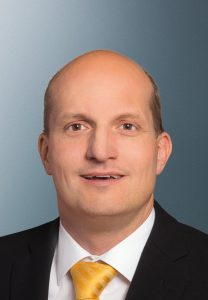A revision of one of the most important standards on functional safety, ISO 13849–1, is now available in the final version. We asked what will change.
Mr Bukowski, what, to your mind, is the biggest change?
Jürgen Bukowski: It is not one big change, but rather the sum of all the changes. For example, design specifications were refined, requirements for application software and the management of functional safety were expanded and the validation specifications were adapted.

For the determination of the required performance level (PLr), there are now refined specifications for the risk parameters. In order to be able to prevent hazards and the probability of their occurrence, in future manufacturers and operators will have to define in more detail, among other things: At what speed does the hazard occur? Or: What options are there for avoiding the hazard? What practical experiences with Safety have already been had with regard to the process? Is the machine operated by trained and suitable operators? With or without supervision? Small but important details have been added here.
What does this mean for machine manufacturers and operators?
They are required to reassess safety functions. In addition, the final draft stipulates a safety requirements specification (SRS) for the clear description of safety functions – with documentation of all details that are required for safe and correct performance. The documentation can also help operators to achieve a clear understanding of all safety functions in their machine during regular inspections and checks.

The opportunity to prevent the hazard and the probability of its occurrence, however, are further
specified through five factors.
That sounds like a lot of work …
If you are doing it for the first time – yes. With a little support and practice, however, many specifications can be applied again. Machine manufacturers also have more flexibility. Every safety function can be implemented through the combination of several subsystems. These are either available as subsystems already validated by the manufacturer or are designed as new subsystems by the machine manufacturer or integrator.
When is it necessary to act?
It is far from clear whether there will be a transition period after publication of the standard in the EU Official Journal and if so, how long this might be. For this reason, design engineers and operators should swiftly address the planned changes. The earlier, the better.




